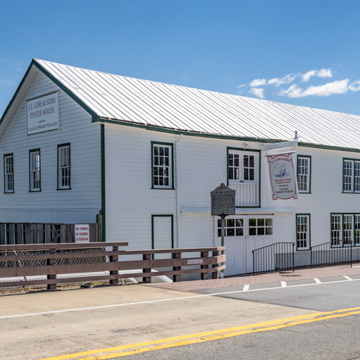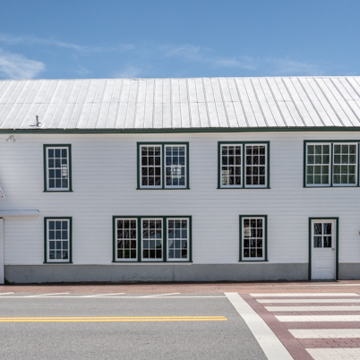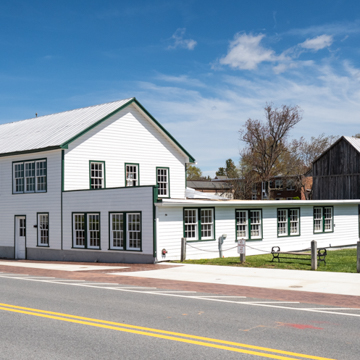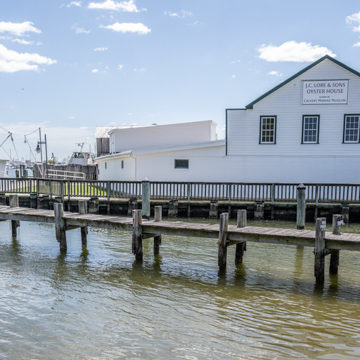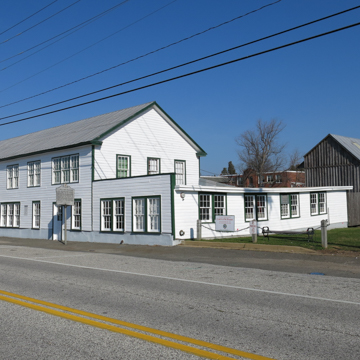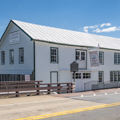A rare surviving seafood-packing plant, J. C. Lore illustrates Maryland’s historic role as the country’s leading oyster producer. By the mid-nineteenth century, over-harvesting in New York and New England had resulted in a market shift to the abundant Chesapeake Bay. Improvements in canning technology and the expansion of the railroad allowed the perishable oyster to be safely transported to tables across the country. One of the largest of approximately thirty-five oyster-packing companies once located along the Patuxent River, J. C. Lore operated from 1888 to 1978, making it the longest continuously functioning packing house in the area.
Joseph Lore Sr. worked with an unknown contractor to design this facility after a hurricane damaged the original building in 1933, heralded in trade literature as “modern in every respect.” Boats delivered the oysters to the water-front receiving room, where they were loaded into wheelbarrows and deposited into rooms lined with shucking tables. The shuckers, generally European immigrant or African American women and children, extracted the oyster meat by hand and sorted it by size. Filled buckets were passed through a window to the processing room. The weights were tallied for each shucker to determine payment, and the oysters were further rinsed, canned, and held in cold storage prior to shipping. Lore’s “Patuxent” oysters were made famous through the sale of canned oysters to local buyers and grocery store chains in Washington, Maryland, and Pennsylvania. Calvert County purchased the building for the Calvert Marine Museum with its closure in 1978, and it was designated a National Historic Landmark in 2001.















